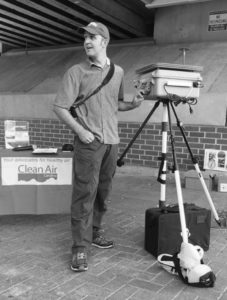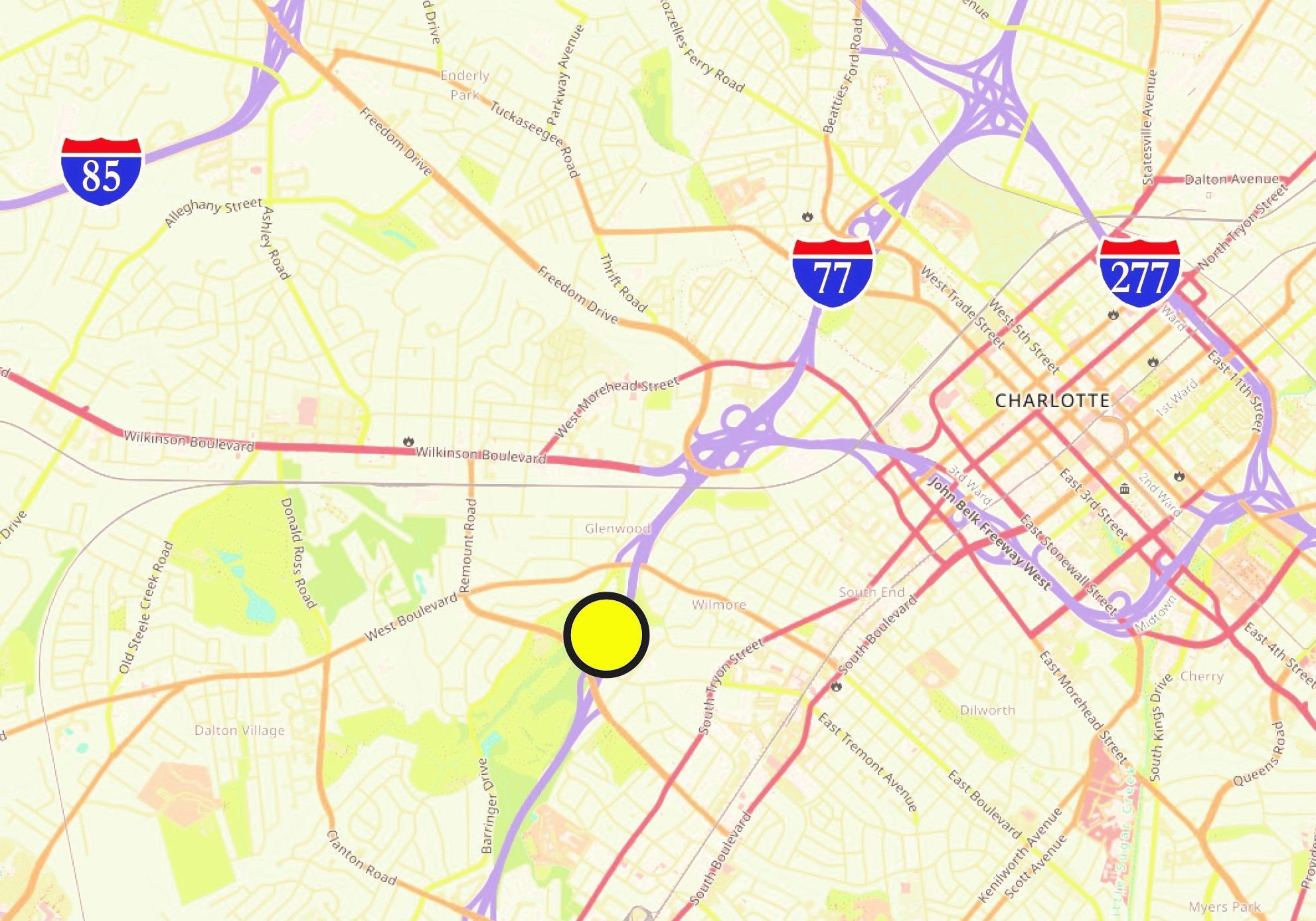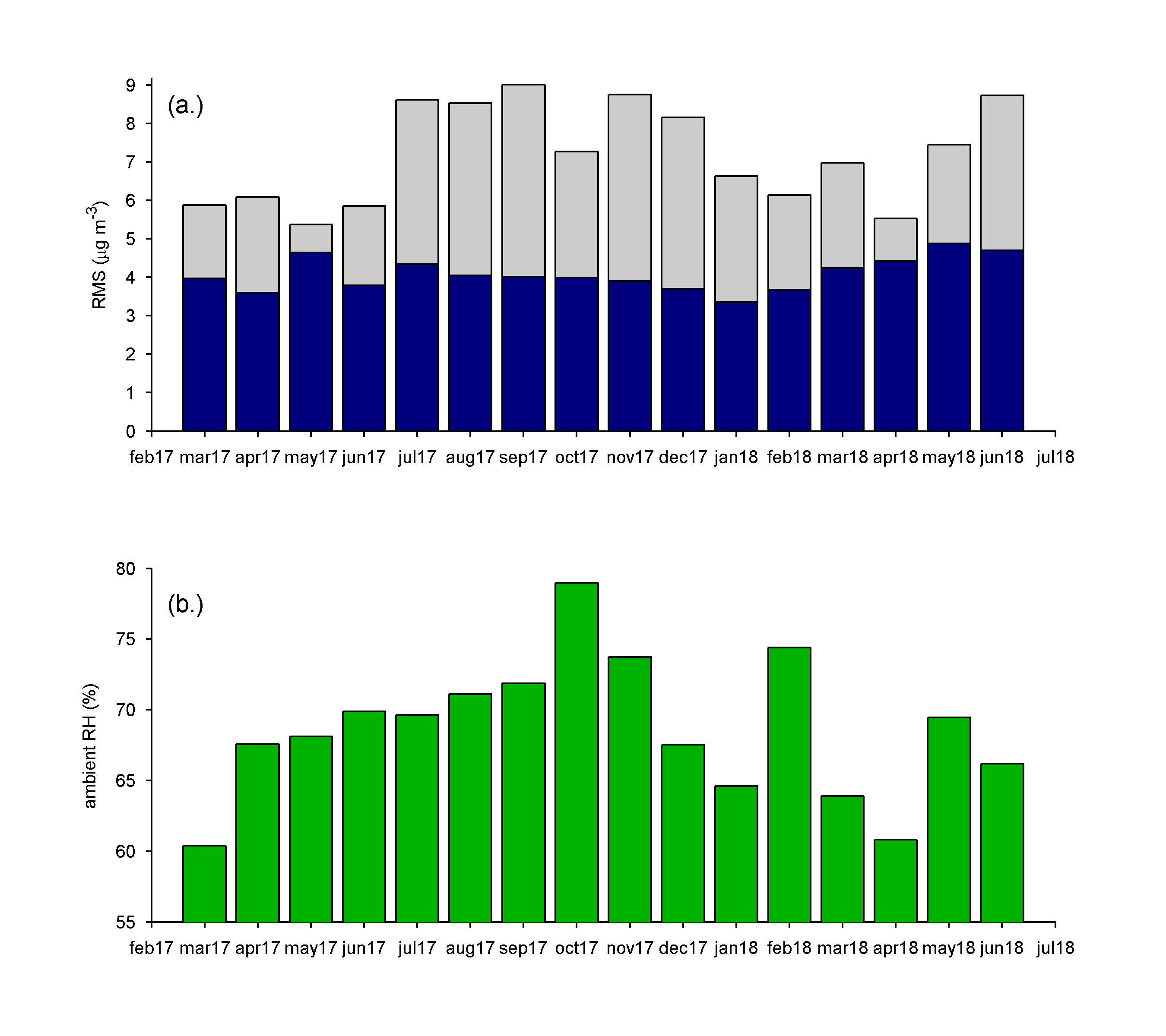
Sampling PM2.5 in downtown Charlotte with Clean Air Carolina in 2016.
The Clean Air Act guarantees everyone in the USA the right to breath clean air. The main air pollutants regulated by the CAA are small particulates called PM2.5 and ozone gas. For a long time, measuring the concentration of PM2.5 and ozone were left only to experts because the machines that could measure concentration were so expensive. Now, however, the Internet of Things and microelectronics have democraticized the measurement process by dramatically reducing the purchasing cost, even while the data itself still requires a bit of work to fully decipher. I am working at the interface of air quality and low-cost air monitoring instruments. I have worked with low-cost monitoring of ozone, CO2, VOCs, and other gaseous compounds/pollutants, but my main area of expertise centers on the aerosol particles that contribute to PM2.5. My teaching, research, and public outreach all include activities related to air quality science, data, and communication.
Research

Co-location experiment near downtown Charlotte
My PhD way-back-when was built around studying aerosol particles at regional scales, and how it is that these particle play a role in the energy balance of the Earth-Sun-Atmosphere system by absorbing and scattering sunlight. I now mostly work at finer spatial scales and have been developing a long-term dataset in North Carolina and Mecklenburg County using low-cost particle sensors sold by a company called Purple Air. Check out some of my presentations and publications, some of the graphics on this page, or you can email me with questions. Summary point is that those cheap little sensors work really well after some adjustments!

Comparison of data before and after field correction
The top chart to the left shows how well a reference PM2.5 and PM2.5 reported by a co-located Purple Air device compare in terms of RMS difference before field correction (gray bars) and after field correction (blue). The bottom chart shows the average monthly relative humidity, which is an important factor to consider because particles can grow under moderate to high RH conditions typical of humid sub-tropical North Carolina.
Various activities related to my air quality research
-Member of the Mecklenburg County Air Quality Commission since 2015
-Board member of Clean Air Carolina since 2015
-Scientific Advisory Board member of Clean Air Carolina’s AirKeepers Program since its inception in 2019
-Committee member of Particle Falls 2020 with Clean Air Carolina since 2019
-Advisory Board for MCAQ’s Air Quality Learning Station since 2018
-Teaching Atmospheric Chemistry since 2012
-On-going collaboration with research group at EPA Research Triangle Park since 2019
-On-going collaboration with research group at EPA health researchers since 2018
-On-going collaboration with LUESA Mecklenburg County Air Quality staff since 2016
-On-going collaboration with Forsyth County Air Quality staff since 2018